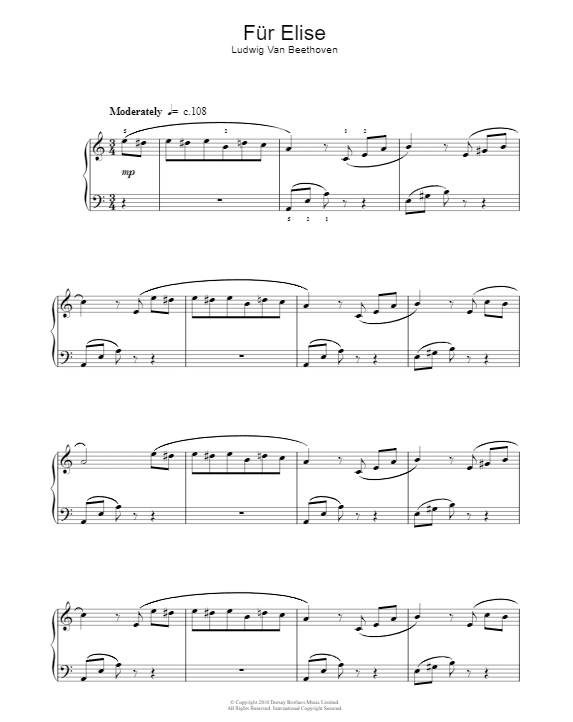Did you know this about Für Elise by Ludwig van Beethoven?
Bagatelle No. 25 in A Minor was a song composed by Ludwig van Beethoven and is commonly known as Für Elise. It is translated “For Elise” and it is a composition for solo piano. The piece is a beautiful, flowing piano piece that people automatically recognize as soon as the pianist starts playing it. The interesting thing about the piece is that it wasn’t discovered until some 40 years after Beethoven’s death.
Oddly enough, no one knows who this “Elise” is but there have been some speculations by historians as to who she was. Beethoven, who lived from 1770 to 1827, was actually deaf at the time of his death and composed many of his best symphonies at a time when he couldn’t hear anything. Download Fur Elise sheet music here.
Getting Für Elise Published
In 1867, some 40 years after Beethoven died, a man named Ludwig Nohl discovered the song and he attested that the original autographed manuscript had on it the title, “For Elise on April 27 in memory of L. v. Bthvn.” Nohl transcribed the music himself and the version that is well known today is actually an earlier version of what he transcribed. A later version also exists that has significant changes to the accompaniment part. You might find interesting Moonlight Sonata sheet music as well.
Who Was Elise?
Just who was Elise? No one knows for sure but scholars have suggested that it could be one of the following women:
- Therese Malfatti: it has been suggested that Ludwig Nohl may have transcribed the original material incorrectly and that the name is not Elise, but instead Therese. Malfatti was a friend and student of Beethoven’s and some claim that he proposed to her in 1810, although she did not marry him.
- Elizabeth Röckel: A 17-year-old German soprano singer, Röckel was nicknamed Elise and she had been a friend of Beethoven since the year 1808.
- Elise Barensfeld: This woman was a child prodigy who toured with a friend of Beethoven’s and was a mere 13 years old. Canadian musicologist Rita Steblin came up with this theory in 2014, although no one can definitely prove or disprove it.
Download Für Elise Piano Sheet Music
An Interesting Side Note
In Für Elise, according to some, the first three notes spell out something that resembles the name Elise. Regardless of what we can prove or disprove, however, one thing is certain: this tune is beloved by people the world over and as soon as you hear the first measure or two, you will instantly recognize it. It is indeed a beautiful piece of music that no one is able to forget.

